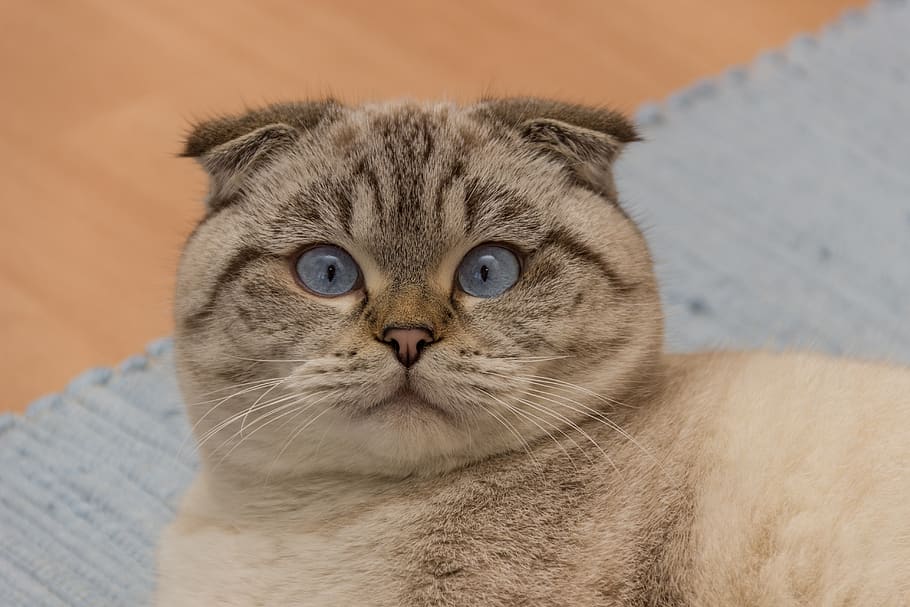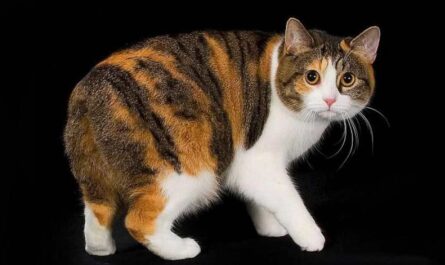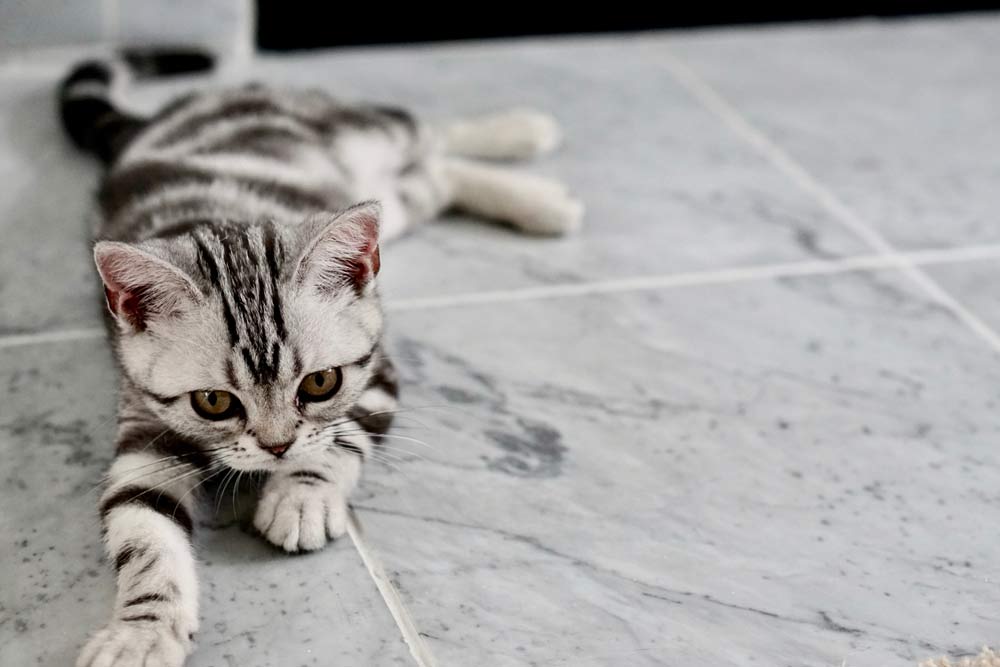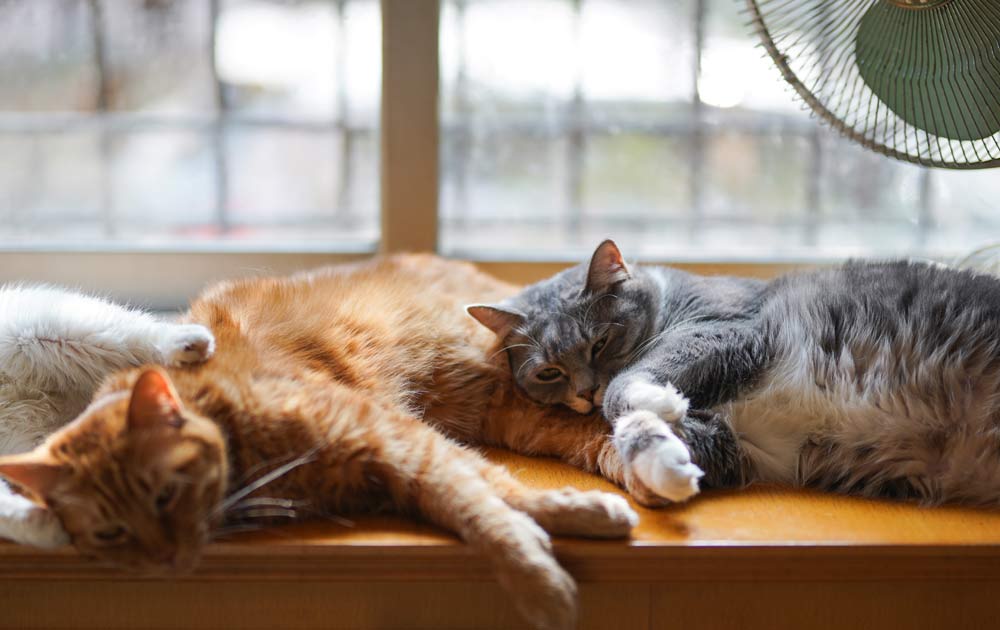What is cat chattering? Have you ever witnessed your cat, poised like a feline warrior, eyes wide and tail twitching, erupt in a rapid-fire cascade of “brrrrts”? This enigmatic phenomenon, known as chattering, is one of the most fascinating, yet perplexing, vocalizations in the feline repertoire. Unlike the familiar purr or the staccato meow, the chatter leaves us scratching our heads, desperate to decipher its hidden meaning. Is it a battle cry of anticipation? A whispered greeting to unseen friends? Or perhaps a symphony of internal musings, sung in the high-pitched notes of feline thought?
In this article, we’ll embark on a journey to dissect the mystery of the cat chat. We’ll delve into the mechanics of this unusual sound, explore its possible meanings, and discover ways to respond to these cryptic chirps, ultimately strengthening the bond we share with our furry companions.
Decoding the Chirp: Anatomy of a Chatter
In the intricate world of feline communication, where meows, purrs, and hisses orchestrate a symphony of expression, the chatter emerges as an enigmatic outlier. This unique vocalization, distinct from the mellifluous purr or the harsh meow, manifests as a rapid succession of short, high-pitched chirps. The auditory experience has been likened to a machine gun’s staccato rhythm or a miniature engine gone haywire. What sets the chatter apart is not just its distinctive sound but the underlying mystery of its origin—an intricate dance of the cat’s vocal cords that, despite scrutiny, retains an air of perplexity.
Unveiling Feline Physiology
Delving into the physiological realm, the chatter unveils a fascinating facet of feline anatomy. Unlike the versatile purr, which resonates during both inhalation and exhalation, the chattering spectacle unfolds exclusively during the exhale. This nuance adds an extra layer to its uniqueness, underscoring the intricacies of feline vocalization. The rapid vibration of the cat’s vocal cords during this process remains a captivating puzzle, leaving feline enthusiasts and researchers alike in awe of the cat’s vocal prowess.
Symphony in Variation: Pitch, Intensity, and Rhythm
The allure of the chatter deepens when one considers the myriad variations in pitch, intensity, and rhythm that color this expressive vocalization. A low, drawn-out chirp paints a different emotional landscape compared to a rapid succession of staccato bursts. The feline sonic palette, it seems, is a canvas of nuanced expression. Each variation in the chatter’s tonal qualities hints at a spectrum of emotions, adding layers of complexity to the already intricate tapestry of feline communication.
Chatter’s Dialogues with Other Vocalizations
In the intricate feline lexicon, the chatter engages in a silent dialogue with other vocalizations, forming a dynamic narrative of emotion and expression. It’s crucial to recognize the interconnectedness of the chatter with fellow sounds like trills and hisses. The playful trill may seamlessly escalate into a chattering frenzy, mirroring the fluidity of feline emotions. Similarly, a frustrated hiss might transform into a series of rapid chirps, suggesting a shared emotional root. Understanding the chatter requires acknowledging its role within the broader feline symphony—a melodic conversation of sounds that transcends the boundaries of mere communication.
The Chirp in Context: Unmasking Feline Intentions
As we step into the enigmatic world of feline behavior, a myriad of theories sprout like wildflowers in a field of catnip, each vying to unravel the mystery of feline chatter. One compelling proposition delves into the primal instinct of the hunt. Picture your cat, perched elegantly on a windowsill, fixated on a fluttering bird just beyond its grasp. In this scenario, the curious chattering may well be the feline equivalent of a battle cry – a miniature symphony of excitement and anticipation as the skilled hunter readies himself to pounce. This theory gains credibility when we closely observe the accompanying body language, often predatory, featuring flattened ears and twitching tails that synchronize with the rhythm of the chatter.
Chirps as Social Bridges: A Playful Invitation
Contrary to the warlike interpretation, the enticing chirp might not always echo a battle hymn. Some feline enthusiasts propose that chattering serves as a means for cats to initiate social interaction. Imagine the joyous cacophony of chattering that ensues when two cats reunite after a brief separation, or the curious chirps directed at your ankles as you enter a room. In these instances, the chirp metamorphoses into a social bridge – a whispered invitation to engage in play or simply revel in each other’s presence. It becomes a whimsical greeting, uniting felines or extending a warm welcome to their human companions.
The Dark Side of Chattering: Frustration and Anxiety Unveiled
However, not every chirp in a cat’s repertoire sings a tune of joy. Frustration and anxiety can manifest through this rapid-fire vocalization. Imagine your cat, fixated on a tantalizing bird just beyond the window, chattering incessantly with a mixture of fascination and vexation. In such moments, the chirp becomes a vocal outlet, an audible expression of their pent-up frustration. This frustration is mirrored in their tense posture and narrowed pupils, painting a vivid picture of the complex emotional spectrum that underlies the seemingly whimsical act of chattering.
Internal Dialogues and Chirped Musings: The Uncharted Territory
And then, we step into the tantalizing realm of speculation – the prospect that chattering could be the feline equivalent of an internal dialogue, a stream of consciousness articulated through chirps. While this theory boldly pushes the boundaries of scientific understanding, it weaves a captivating narrative of our feline companions lost in profound thought. Picture a cat’s mind abuzz with chirped musings and silent calculations, painting an ethereal portrait of their mental landscape. Though scientifically uncharted, this idea adds a layer of depth to our understanding of feline communication, transforming the act of chattering into a mystical dance of thought and expression.
Reading the Chattering Tea Leaves: Signs and Observations
Unveiling the true essence behind a cat’s chirp requires a nuanced approach that extends beyond mere auditory perception. Instead, it beckons us to delve into the intricate tapestry of feline communication, where deciphering meaning becomes an art intertwined with keen observation.
Exploring the Intricacies of Feline Body Language
In this endeavor, sound becomes just one brushstroke on a larger canvas, where the silent language of the body assumes paramount significance. Beyond the audible, subtle movements such as a twitching tail or flattened ears contribute essential insights into the emotional symphony playing within your feline companion. The narrative unfolds not just in the auditory notes but in the visual punctuation marks scattered throughout the body’s expressive tale.
Are they crouched low, muscles coiled with anticipation for a pounce that might follow? Or are they leisurely sprawled, a picture of contentment, with chirps directed at a whimsical butterfly fluttering by? The richness of the feline narrative lies in decoding these visual cues, each a stroke in the masterpiece of their chattering song.
Unearthing Triggers: A Gateway to Deeper Understanding
To truly fathom the meaning concealed within the feline melody, one must embark on a journey to identify the triggers that set it in motion. Is it the sight of birds that ignites this vocal expression, turning a simple observation into a symphony of chirps? Does the feline orchestra play its notes most passionately during playtime, as a feathery wand sparks their enthusiasm? Alternatively, is the crescendo of chirps a joyous welcome upon your return, a heartfelt response to the reunion after a prolonged absence?
Understanding these triggers is akin to wielding a key to a treasure trove of meaning. Each chirp, then, becomes a linguistic brushstroke painted against the canvas of specific emotions, allowing you to customize your response with precision.
Decoding the Rhythm: Frequency and Duration as Linguistic Elements
Within this feline lexicon, the very rhythm of chirping emerges as an eloquent dialect, each note carrying its weight in the grand narrative. A brief burst of chirps might be a passing greeting, a fleeting expression of acknowledgment. On the other hand, a sustained symphony suggests a deeper emotional resonance, whether it be heightened excitement or an undercurrent of frustration.
By attuning your senses to the frequency and duration of these vocalizations, you embark on a journey to translate the seemingly enigmatic language of your feline companion. No longer a mysterious code, their chirps transform into the vibrant threads of a conversation, where each nuance and cadence unfolds as a delightful revelation in the intricate tapestry of feline communication.
:max_bytes(150000):strip_icc()/GettyImages-593450425-5176c57c7b77417f9dd01dfb43827e7b.jpg)
Navigating the Chirp: How to Respond to Your Cat’s Vocalizations
In the intricate realm of feline communication, understanding the nuanced emotions behind your cat’s chirps becomes paramount. The key lies not just in hearing the chirps but in deciphering the underlying sentiment that propels these delightful vocalizations. The imperative is to tune in to the emotional frequency of your feline companion.
Playful Chirps: A Call to Feline Festivity
When the melodious cadence of your cat’s chirps resonates with a playful vibe, it’s an open invitation to partake in their joyous revelry. Seize the opportunity to create a delightful feline fiesta. Embark on a feather-chasing escapade, unveil the catnip-stuffed mouse, or unveil the interactive toy arsenal that ignites their playful spirit. This positive reinforcement forms a symbiotic link between the act of chattering and the sheer delight derived from engaging activities, transforming mere chirps into lively invitations for shared amusement.
Frustration and Anxiety: The Subdued Chirps of Unease
Yet, amidst the symphony of feline communication, there may arise chirps that bear the subtle nuances of frustration or anxiety. In such moments, become the soothing balm for your feline friend’s emotional turbulence. Envelop them in gentle petting, utter words of comfort, and let the mellifluous timbre of your voice serve as a calming melody. Introduce a delectable treat or redirect their focus toward a tranquil activity, whether it be a grooming session or a cozy cuddle. Sometimes, the simple acknowledgment of their chirps with a tender voice can provide the solace and reassurance they seek.
The Allure of Ambiguity: Embracing the Enigma
In the pursuit of understanding every chirp, one may find themselves ensnared in an elusive quest. The labyrinthine nature of feline communication beckons us to resist the temptation of overanalysis. Instead, relish in the enigma! Revel in the distinct expressiveness of your feline companion, savoring the orchestration of chirps, purrs, and meows that collectively compose a vivid tapestry, offering glimpses into the intricate landscapes of their inner world. Embrace the beauty of ambiguity, for within it lies the essence of the captivating bond between you and your enigmatic feline confidant.
When the Chirp Becomes a Chatterbox: Addressing Excessive Vocalizations
Excessive vocalizations in cats, while occasionally endearing, can pose challenges if left unaddressed. The first crucial step in understanding and managing this behavior is to distinguish between charming chattering and disruptive vocalizations that may signal underlying issues.
Medical Considerations
Before jumping to conclusions about behavioral problems, it is imperative to delve into potential medical factors contributing to your cat’s excessive vocalization. Cats may express discomfort or pain through vocalizations, making it crucial to consult with a veterinarian to rule out any health concerns. A comprehensive examination can ensure your feline companion’s overall well-being and shed light on any hidden ailments that may be influencing their vocal behavior.
Environmental Analysis
Beyond medical considerations, a cat’s surroundings play a pivotal role in shaping its behavior. Assess whether your feline friend is provided with ample mental and physical stimulation, suitable hiding spots, and play opportunities. Boredom is a common trigger for excessive chattering, emphasizing the importance of enriching their environment. Introducing stimulating activities such as puzzle feeders or interactive toys can redirect their vocal energy, fostering a more harmonious atmosphere.
Alternative Communication Channels
Understanding and responding to your cat’s needs can significantly impact their vocalization patterns. Consider implementing alternative communication methods, such as training your cat to use a bell or employ a gentle paw tap to express their desires, be it for food or attention. By providing them with alternative outlets for communication, you empower your cat to express themselves while potentially mitigating excessive chirping.
Professional Guidance
If the excessive vocalizations persist and begin to disrupt your household, or if anxiety is suspected, seeking professional help becomes imperative. Engaging the services of a qualified animal behaviorist can be instrumental in identifying triggers and developing effective strategies for managing and curbing undesirable vocal behavior. Professional intervention not only helps address the immediate issue but also promotes a deeper understanding of your cat’s unique needs and behaviors. See why thousands of cats love BoxCat
Decoding the intricacies of your cat’s vocalizations involves a comprehensive approach that combines medical scrutiny, environmental enrichment, alternative communication avenues, and, when necessary, expert guidance. By taking a multifaceted approach, you can foster a more harmonious relationship with your feline companion, ensuring their well-being and addressing any concerns that may contribute to excessive vocalizations.
Celebrating the Symphony: Embracing the Language of Chirps
The cat’s chatter, shrouded in an aura of enigma, unveils a captivating window into the intricate world of feline cognition. Beyond being merely purring cuddle machines, our feline companions emerge as intricate beings, possessing a rich tapestry of emotions, thoughts, and desires that find expression through a distinctive vocal language.
The Art of Cat Chirps
Embark on the path of becoming a keen and perceptive observer of your cat’s chirps. Dive into the subtleties embedded in the pitch, rhythm, and context of these feline vocalizations. With time, a symphony unique to your cat’s communication style will unravel before you, establishing a profound connection rooted in empathy and comprehension.
Engage in a journey of exploration, as the nuanced melodies of your cat’s chirps reveal layers of meaning. Each chirp becomes a note in the intricate composition of your feline friend’s communication, fostering a bond that transcends the superficial and delves into the profound intricacies of their expressive language. RPM 3.0 – 60% CONVERSION & Money for Affiliate Marketing
Embracing the Cat’s Unique Communication Style
In the final movement of this symphony, it becomes imperative to honor and respect the idiosyncrasies inherent in your cat’s communication style. Some felines may be effervescent chatterboxes, while others choose to reserve their chirps for special and significant moments. In this tapestry of feline communication, embrace the mystery, revel in the ambiguity, and savor those head-scratching moments.
Adopt an attitude of reverence towards the journey itself; the pursuit of decoding the language of chirps is as enriching as reaching the destination. Delight in the process of unraveling the unique melody your furry companion composes, and relish the joy derived from understanding and responding to their intricate expressions. In this shared linguistic venture, you and your feline friend forge a connection that transcends words, creating a harmonious dialogue that echoes through the tapestry of your lives. Cat accessories on Amazon
Final thought
The chattering cat remains an enigma, a symphony of chirps that whispers tales of excitement, anticipation, and, yes, even the occasional frustration. By understanding the potential meanings behind this curious vocalization, observing the accompanying body language, and responding with compassion and attentiveness, we can strengthen our bond with our feline companions. So, listen closely, dear reader, to the chirps that fill your home. Let them guide you into their world, a world where purrs are love letters, meows are conversations, and chirps are the playful hymns of a connection unlike any other. In the end, it’s not about comprehending every chirp; it’s about celebrating the music, the journey, and the profound privilege of sharing the song of our feline friends.
Other Interesting Articles
- How To Take Care Of A Kitten: A Guide For New Pet Owners
- Why Do Cats Chirp? Major Reasons Behind This Cute Sound
- 10 Common Reasons Why Cats Suckle? How To Discourage
- 12 Reasons Why Cats Meow So Much: How To Mitigate
- 9 Common Reasons Why Cats Chirp or Chatter: 5 FAQs
- Cat Zoomies: Why Does A Cat Get Them? When to Call a Vet?
- Burmilla Cat Breed: Profile, Traits, Grooming, Health, Care
- Aegean Cat Breed: Profile, Traits, Grooming, Health, Care
- American Wirehair Cat Profile, Traits, Grooming, Health, Care
- American Shorthair Cat Profile, Traits, Grooming, Health, Care
- American Polydactyl Cat Profile, Traits, Grooming, Health, Care
- American Longhair: Profile, Traits, Grooming, Health, Care
- American Curl Cat Profile, Traits, Grooming, Health, Care
- Asian Semi-Longhair Cat Profile, Traits, Grooming, Health, Care
- California Spangled Cat: Profile, Traits, Grooming, Health, Care
- Burmilla Cat Breed: Profile, Traits, Grooming, Health, Care
- British Shorthair Cat: Profile, Traits, Grooming, Health, Care
- Brazilian Shorthair Cat: Profile, Traits, Grooming, Health, Care
- Bombay Cat Breed: Profile, Traits, Grooming, Health, Care
- British Longhair Cat: Profile, Traits, Grooming, Health, Care



